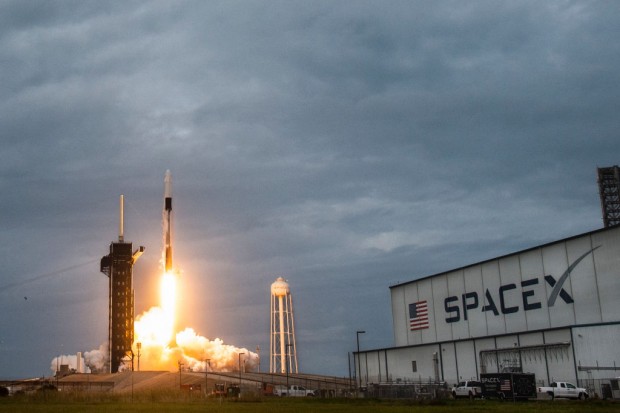Former SpaceX Engineer to Build Space-Based Solar Power to Provide 'Infinite Energy' for Earth
By Thea Felicity
Apr 30, 2024 11:39 AM EDT
Apr 30, 2024 11:39 AM EDT

(Photo : Photo by CHANDAN KHANNA/AFP via Getty Images)
Michigan-based start-up Virtus Solis, founded by former SpaceX engineer John Bucknell, revealed plans at the International Conference on Energy from Space in London to use clean energy from space using SpaceX's Starship.
"For space-based solar power to work, you need to have heavy-lift launch, you need to have wireless power transfer and you need to have the economics," Bucknell clarified during the conference.
With SpaceX's Starship promising low-cost access to space, Virtus Solis sees a viable pathway to making orbiting power plants not just feasible but cheaper than traditional Earth-based energy generation methods.
According to Space.com, SpaceX's innovative approach to rocketry, particularly with reusable rockets, has dramatically reduced the cost of launching payloads into space. Although Starship's cost estimates may seem ambitious, Bucknell believes that once costs drop below a certain threshold, space-based solar power will outcompete conventional energy sources like nuclear, gas, and coal.
READ NEXT: Elon Musk's SpaceX Project in South Texas Met With Lawsuit to Protect the Tribal Land
Specifically, Virtus Solis plans to build large solar power systems in space made up of interconnected solar panels. These arrays would be assembled by robots using interchangeable parts. Once assembled, SpaceX's Starship would transport these arrays into specific orbits around Earth called Molniya orbits, which are highly elliptical (oval-shaped) paths.
The solar arrays would continuously collect sunlight from these orbits and convert it into electricity. This electricity would then be transmitted to Earth in the form of microwaves. Ground-based receiving antennas would capture these microwaves and convert them into usable electricity.
Virtus Solis aims to supplement or replace traditional power sources like fossil fuels by providing constant power from space, ensuring a steady electricity supply regardless of weather conditions or time of day.
However, challenges remain, particularly in improving wireless power transmission efficiency. Virtus Solis aims to address these by launching a demonstration satellite by 2027 and building a commercial-scale solar installation by 2030.
© 2024 VCPOST, All rights reserved. Do not reproduce without permission.
Join the Conversation